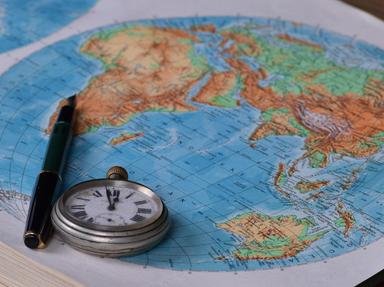Quiz Answer Key and Fun Facts
1. This impressive 131-foot tall equestrian statue is the focal point at the Genghis Khan Statue Complex. To see this spectacular sight, you will need to visit the world's least-densely populated, independent country. Where are you traveling to?
2. Completed in 1997, the neoclassical "Palace of the Parliament" is the world's largest civilian building, and the second-largest of all after "The Pentagon". Other visitor attractions here include Bran Castle, once the reputed home of a scary character made famous by an Irish novelist. Which country are we visiting now?
3. If the structure in this photograph looks something like Rome's famous Colosseum, that is because the El Djem Amphitheatre was built by the Romans in the 3rd century. With seating for 35,000, it is the biggest amphitheatre built outside Italy. You may also recognize it from the famous graffiti scene in Monty Python's "The Life of Brian" which was filmed here. In which country are we now traveling?
4. The Manú National Park, located high up in the mountains, covers an area of more than 6,000 square miles, which is about four times the size of the US state of Rhode Island. Rare native creatures you might be able to see here include the impressive spectacled bear (photographed), the tayra and the yellow-tailed woolly monkey. Which country would you need to visit?
5. The ancient City of Polonnaruwa dates back to the 11th century, and is one of the best-preserved archaeological relic sites you are likely to visit. Today, the former royal palaces are home to a troop of toque macaques, a monkey species found nowhere else in the world. Which country must you visit to enjoy this popular tourist destination?
6. This magnificent castle was built on the banks of the 'Afon Seiont' between 1283 and 1330. Besieged three times by parliamentary forces during the English Civil War, it has been the setting for two 20th-century investitures, first in 1911 and then in 1969. In which country can you visit this castle?
7. Built and maintained by African slaves in the early 1700s, The Brimstone Hill Fortress National Park is one of the best-preserved examples of colonial military architecture in the Caribbean. Located in the smallest sovereign state in the Americas, to which two-island country must you go to see this historic site?
8. Built between 723 and 743, Qasr Amra is one of the best-preserved of all desert castles and is considered a classic example of Islamic architecture. The remains of the royal retreat that visitors can see today are notable for frescoes depicting the zodiac. Where must you go to visit this historic site?
9. Koutammouko, the Land of the Batammariba people, is a region designated as a UNESCO World Heritage Site in 2004 for its cultural significance. The traditional mud tower-houses pictured here are still the preferred style of living for many people in the northern part of our next destination and have become a national symbol. Where are we?
10. Designed in the French High Gothic style, this 389-foot tall cathedral is the tallest church building in Scandinavia. Standing on the west bank of the Fyris River, the city is also the home to Scandinavia's oldest university. Where must you go to visit this impressive structure?
Source: Author
EnglishJedi
This quiz was reviewed by FunTrivia editor
Tizzabelle before going online.
Any errors found in FunTrivia content are routinely corrected through our feedback system.

